
Growing and Flowering Cape Primroses (Streptocarpus)
By Laurelynn Martin and Byron Martin
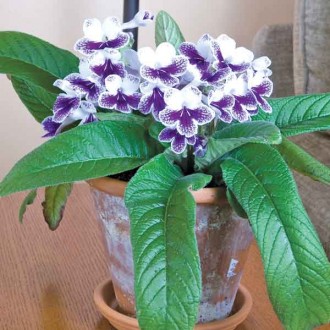 |
| 'Purple Panda' |
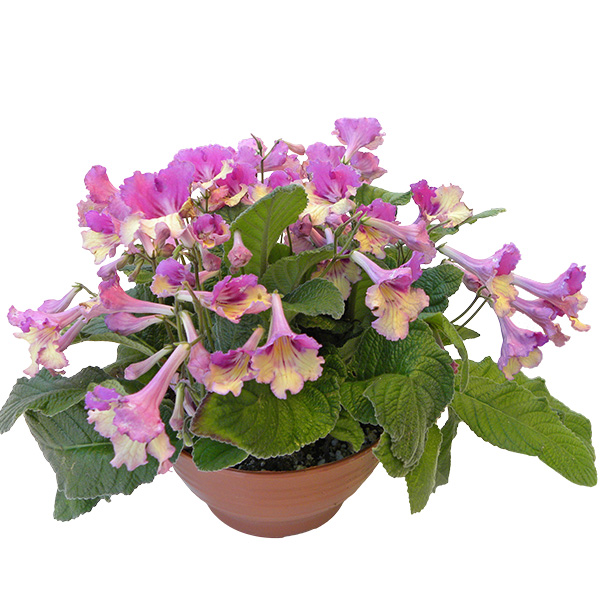 |
|
'Yellow with Pink Cap' |
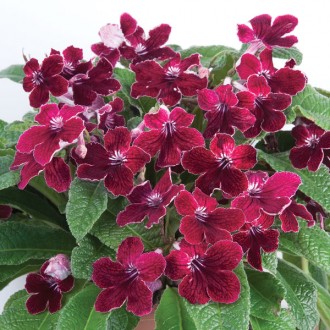 |
| 'Red Alert' |
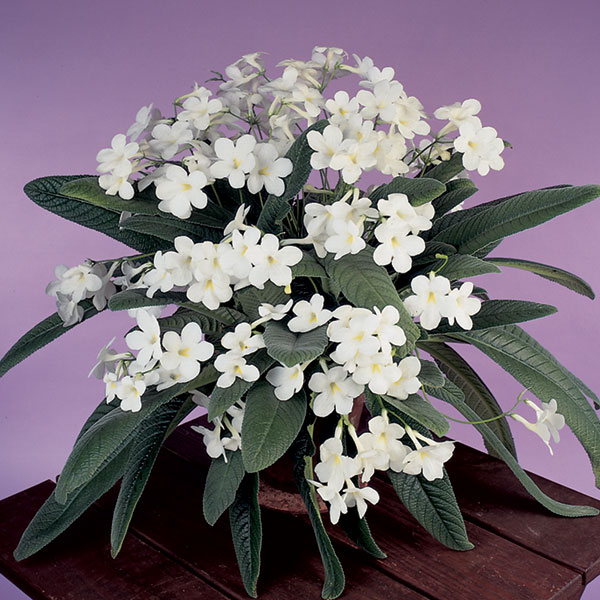 |
| 'Maasen's White' |
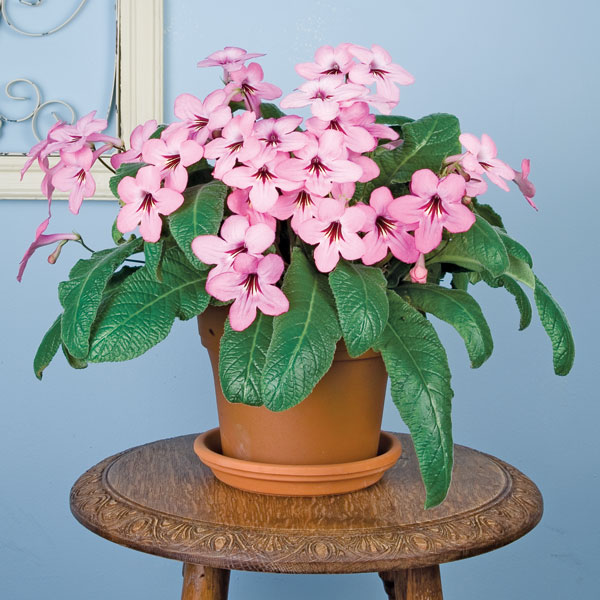 |
| 'Lucky Strike' |
Cape Primroses, also known as Streptocarpus or Streps, have filled a niche as flowering houseplants for the home for many decades. Their velvety, long green leaves and floral sprays that rise above the foliage create a stunning plant for a windowsill garden.
Light Level
Streps are known for their ability to bloom in low light. They actually thrive under those conditions. Originally from South Africa, they are found in their native habitat growing on the forest floor; that's why they have a tolerance to lower light and periods of dryness.
Grown In a Home Environment
Grow in bright shade to partial sun near a window but not in direct southern sunlight (an east or north window is fine). Cape Primroses are also good candidates for a light garden where they will bloom for many months at a time. The leaves, when grown under low light, are deep green whereas when the light is too high, they will develop a yellowish-green coloration.
Water
Streps tolerate drier soil conditions and as a rule it's best to bring the potting mix to slight dryness and then thoroughly saturate the soil. A slight wilt does the plant no harm. Also, remember to water directly into the soil and do not get the leaves wet, especially with cold water. Cold water on the leaves will stain the leaves and make them unsightly.
Temperature
Temperature requirements are varied, but generally growing Streps from 60˙F to the high 70's is hot enough. They will not tolerate high temperatures. This is one of the greatest challenges in their culture. The summer heat, in many areas of the country, distresses the plants and can sometimes cause their collapse. Any type of heat wave, even those that we get in Connecticut, can wreak havoc with Cape Primrose plants. When temperatures rise into the 90's, the plants will go into a wilt and the leaves get damaged or the plants collapse, as the transpiration of the leaves is far greater than what the root system can uptake.
Flowering
Flowering is initiated by the intensity of light and Cape Primroses can flower 10 months out of the year in natural light on a north or east-facing window. They also make great plants for light gardens and tend to bloom well under those conditions.
Fertilizing Your Plants
Fertilize with caution since Streps are lower light loving plants. Damage can occur when you use large or frequent doses of high salt fertilizers. When you feed your plant, we recommend intermittent feeding with any liquid, balanced, houseplant fertilizer (where the three numbers are close together or the same). It's best to reduce the recommended fertilizer dosage by half (so if it calls for one teaspoon per quart of water, add only half a teaspoon per quart). Periodically, you should leach, or let water run out of the bottom of the pot, so you don't get an accumulation or build up of salt levels from the fertilizer. One of the symptoms of excess fertilization is a browning or burning of the leaf edge as the young leaves emerge and start to grow. As this damaged leaf matures, there will be a burned edge and a constricted area in the leaf. Remember that high temperatures along with greater leaf transpiration can aggravate this problem.
Pests
Cyclamen mites and aphids can be a problem when you're growing Cape Primroses. Cyclamen mites affect the youngest leaves causing a browning or distortion of the growth. Aphids will get on the flowers but only if another infected plant is nearby. We recommend spraying the plants with neem oil, 2 TB per gal with 4 tsp of dishwashing detergent. You'll need to apply several applications usually a week apart. It's also best to isolate any infected plants during treatment so the pests don't spread to other plants.
Root Disease
Root disease can be an issue for Cape Primroses during high temperatures. Since the roots cannot take up enough water during high periods of heat, the stressed root system is the perfect place for disease to set in. If you notice that the plants don't recover from the wilt they experience on hot days, then tap the plants out of their pots. Diseased roots will be dead and break apart when touched. Rots can also affect the crown at the soil surface cutting off the flow of water. If your home is air-conditioned during the summer heat, then the plants are better able to sustain high temperatures.
Pruning
Cape Primroses grow in a rosette and periodically the older leaves need to be pinched off if they are yellowing or looking shabby. The old flower stems should also be removed once the flowers have past to keep your plant looking healthy and vibrant.
Click here to view our Cape Primroses

